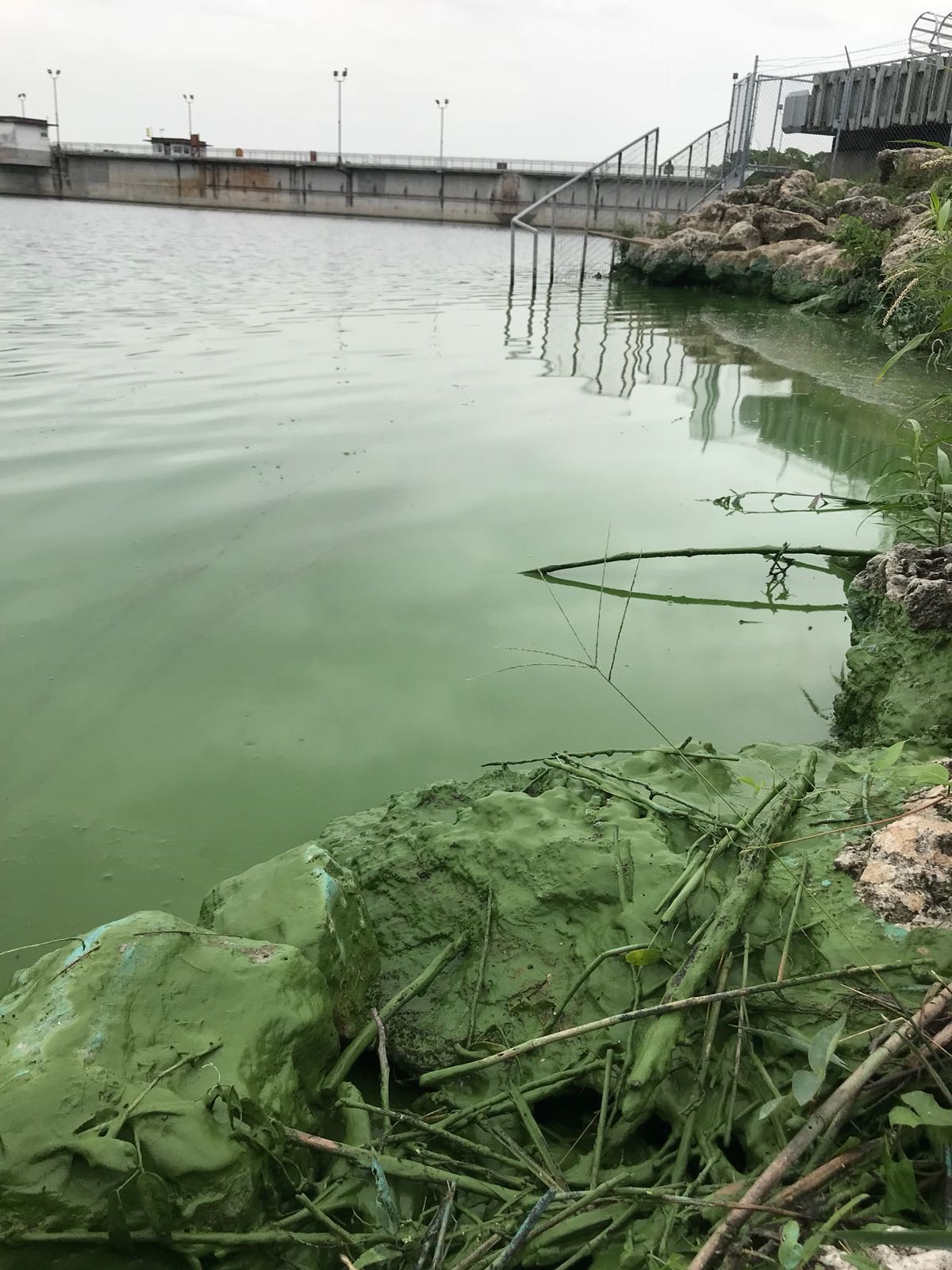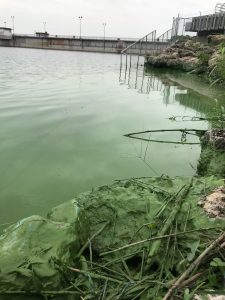By Lisa Krimsky
Florida has an algae problem, and we’re not alone. The population on this planet is growing, as is the need to feed and house 7.6 billion people. Algae blooms are naturally occurring. However, a warming climate, human activities and nutrient inputs from stormwater, agricultural and urban land use, and sewer and septic systems have significantly increased the amount of nutrients available for bloom formation in many environments around the world. Florida is no exception, and two different algae blooms in South Florida are making headlines.
RED TIDE
The Florida red tide, Karenia brevis, is a marine dinoflagellate that is found almost exclusively within the Gulf of Mexico. Most of the approximately 2,000 species of dinoflagellates worldwide are harmless. However, some species, such as our Florida red tide, are toxic. Scientists know that Florida red tide blooms originate 10 to 40 miles offshore. Winds and currents bring the blooms inshore, usually in bottom waters. While there is no direct link between the initial development of a bloom and human-derived nutrients, once a bloom has been transported inshore, nutrients may fuel its growth and sustenance.
The red tide bloom that we are currently experiencing along Florida’s Gulf coast began in the fall of last year and intensified this summer. Prevailing winds and currents have kept the bloom inshore where land-based sources of nutrients are fueling its growth, resulting in devastating marine mortality events, human-health concerns and local economic impacts.
BLUE-GREEN ALGAE
The blue-green algae (cyanobacteria) blooms have persisted since June 2018 in Lake Okeechobee and the Caloosahatchee and Saint Lucie estuaries. Cyanobacteria are one of the oldest life forms on our planet and are found throughout the world. In Florida, cyanobacteria can be found in almost every freshwater ecosystem. While they can survive in saltwater, cyanobacteria blooms are more likely to occur in low salinity waters such as streams, rivers and lakes.
Some, though not all, blue-green algae can produce toxins. Microcystis aeruginosa, one of the dominant bloom-forming species in Lake Okeechobee, is almost always toxic.
Cyanobacteria need a few specific ingredients and conditions to grow: nutrients (nitrogen and phosphorus are most important) and adequate sunlight. The cyanobacteria bloom within Lake Okeechobee began during a hot and sunny June 2018. A year of extreme weather patterns preceded and triggered this bloom. The region experienced prolonged drought conditions, followed by heavy spring rains and Hurricane Irma in September 2017. During the drought, nutrients were concentrated in the basin’s sediments and soils. These excess nutrients were released during the high flow rains associated with Hurricane Irma and helped to fuel the bloom within Lake Okeechobee.
Data presented by the Florida Department of Environmental Protection showed that more than 1,000 metric tons of total phosphorus flowed from the northern Kissimmee region into Lake Okeechobee this year; more than double the average annual load. The majority of those nutrients (70 percent) flowed into Lake Okeechobee the weeks immediately following Hurricane Irma.
COMPLICATIONS AND QUESTIONS
To complicate matters, we have to live within the confines of our existing water management system. The areas that have been impacted by the algae blooms are all within the larger Kissimmee-Okeechobee-Everglades system.
To understand the sources of nutrients that may have contributed to these blooms, we need to identify and mitigate all sources of nutrients to the estuaries. This includes the area beginning with the headwaters of the Kissimmee River Basin, south into Lake Okeechobee; the Caloosahatchee Estuary Basin to the west; and the Saint Lucie Estuary Basin east — all of which are identified as impaired for nutrients.
During some extreme rainfall periods, such as what was experienced in 2018, the U.S. Army Corps of Engineers discharged water from Lake Okeechobee into the Caloosahatchee and Saint Lucie estuaries as required by the Lake Okeechobee Regulation Schedule to prevent the Herbert Hoover Dike from being compromised. When nutrient-rich freshwater is released from Lake Okeechobee out to the estuaries in volumes that become harmful, the salinity within the estuaries can be reduced to levels that are favorable for blue-green algae growth. These algae blooms have remained persistent in both systems, and scientists cannot predict when they will dissipate.
Scientists and the community at large still have many questions that remain to be answered. We are not sure what initiates bloom formation, nor can we predict when it will end. For blue-green algae, we have not confirmed the source of the algae nor have we identified the specific sources of nutrients that fuel these blooms. Scientists also need to further investigate the human-health impacts of algae blooms. As algae blooms are expected to become more prevalent in a warming future, we need to support research, monitoring and nutrient-reduction efforts at the local, state and federal level.
Lisa Krimsky is a program Extension agent at the University of Florida Institute of Food and Agricultural Sciences Indian River Research and Education Center in Fort Pierce.
This article was featured in the November issue of VSCNews magazine. To receive future issues of VSCNews magazine, click here.
Share this Post











